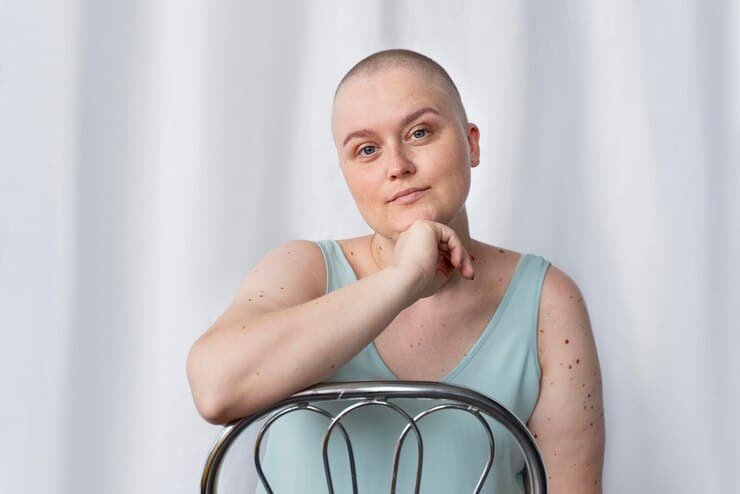The warm embrace of the sun’s rays often Cancer beckons us outdoors, encouraging activities like picnics, beach outings, and sports. While sunshine has its benefits, it’s essential to be aware of the potential risks associated with prolonged exposure to the sun, particularly when it comes to skin cancer. In this article, we will explore the link between sun exposure and skin cancer, providing valuable insights to help you stay informed and protect yourself.
Basking in the warmth of the sun is a cherished pastime, but it comes with potential risks. Explore the vital link between sun exposure and skin cancer as we delve into the complexities of this crucial health concern.
Understanding Sunlight And Ultraviolet Radiation
The sun emits different types of ultraviolet (UV) radiation, categorized into UVA, UVB, and UVC rays. UVA rays penetrate the skin’s deeper layers, causing premature aging, while UVB rays are responsible for sunburn. Both UVA and UVB rays can contribute to the development of skin cancer. UVC rays are absorbed by the Earth’s atmosphere and don’t typically reach the skin.
The Relationship Between Sun Exposure And Skin Cancer

Excessive exposure to UV radiation is a well-established risk factor for skin cancer. Prolonged sun exposure without adequate protection can damage the DNA in skin cells, leading to mutations that may result in the development of cancerous cells. Skin cancers, such as melanoma, squamous cell carcinoma, and basal cell carcinoma, have all been linked to sun exposure.
Melanoma, in particular, is a deadly form of skin cancer that can spread rapidly. While it may not be the most common type, it is responsible for the majority of skin cancer-related deaths. Prevention and early detection are crucial in reducing the impact of skin cancer on individuals.
Also Read: Revitalize Your Skin With The Latest Advancements In Laser Technology
Also Read: The Role Of Laser Technology In Transforming Your Skin
Also Read: Cybersecurity Trends Redefining Online Protection
Also Read: Say Goodbye To Stubborn Acne – Effective Treatments That Really Work
Also Read: Understanding The Different Types Of Skin Cancer And Treatment Options

Protective Measures:
To minimize the risk of skin cancer, it’s essential to adopt protective measures when spending time outdoors:
- Sunscreen: Use a broad-spectrum sunscreen with a Sun Protection Factor (SPF) of at least 30. Apply it generously to all exposed skin, even on cloudy days, and reapply every two hours or more frequently if swimming or sweating.
- Clothing: Wear protective clothing, such as long-sleeved shirts, wide-brimmed hats, and sunglasses that block both UVA and UVB rays.
- Seek Shade: Avoid prolonged exposure to the sun during peak hours (10 a.m. to 4 p.m.) when UV radiation is strongest. Seek shade whenever possible.
- Regular Skin Checks: Perform regular self-examinations of your skin and schedule annual check-ups with a dermatologist. Early detection significantly increases the chances of successful treatment.
1) Skin Cancer Types
Explore the various types of skin cancer, including melanoma, squamous cell carcinoma, and basal cell carcinoma. Understand the distinct characteristics and risk factors associated with each.
Also Read:- Rejuvenate Your Skin With Advanced Laser Therapy At Our Skin Care Hospital
2) UVA Radiation
Uncover the subtle dangers of UVA radiation, often overlooked but playing a significant role in skin cancer development. Learn about the cumulative effects and preventive strategies.
3) The Role Of UVB Radiation
Delve into the specifics of UVB radiation, its intensity, and how it contributes to the development of skin cancer. Discover the importance of protective measures to shield yourself from its harmful effects.
Conclusion
While enjoying the sun is a natural and invigorating part of life, understanding the risks associated with sun exposure is crucial for maintaining good health. By taking proactive measures to protect your skin and staying informed about the dangers of excessive sun exposure, you can significantly reduce the risk of developing skin cancer. Embrace a sun-safe lifestyle, and encourage others to do the same, ensuring that the joy of outdoor activities remains a source of well-being rather than a potential threat to your health.
navigating the link between sun exposure and skin cancer requires informed choices and proactive measures. By understanding the risks and implementing protective strategies, you empower yourself to enjoy the sun responsibly.
FAQ
Q: What is the link between sun exposure and skin cancer?
A: Sun exposure, particularly to harmful UV rays, is a major risk factor for skin cancer. UV rays can damage the DNA in your skin cells, increasing the risk of skin cancer development.
Q: How can I protect myself from the harmful effects of the sun?
A: To protect yourself, it’s crucial to use sunscreen with a high SPF, wear protective clothing such as hats and sunglasses, and seek shade during peak sunlight hours.
Q: Can sun exposure have any positive effects on the body?
A: While it’s important to get some sun exposure for vitamin D production, it’s crucial to do so in moderation and with proper protection to avoid the risks of skin cancer.
Q: How often should I get my skin checked for signs of skin cancer?
A: It’s recommended to perform self-examinations monthly and to have a professional skin check at least once a year, especially if you have a history of sun exposure or skin cancer in your family.
Q: Are there certain populations that are at a higher risk for skin cancer due to sun exposure?
A: Yes, individuals with fair skin, a history of sunburns, or a family history of skin cancer are at a higher risk. It’s also important to note that individuals of all skin types can develop skin cancer from sun exposure.
Q: What are the warning signs of skin cancer that I should look out for?
A: Any new or changing moles, sores that do not heal, or unusual growths on the skin should be evaluated by a dermatologist. Early detection is crucial for successful treatment.
Q: How can I stay informed about the latest research and guidelines regarding sun exposure and skin cancer?
A: Stay informed by following reputable health organizations, such as the American Academy of Dermatology, and by scheduling regular check-ups with a dermatologist who can provide personalized guidance based on your risk factors and skin type.




